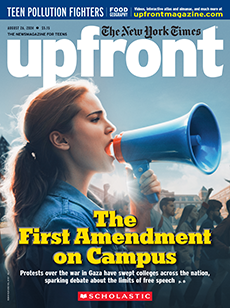1. Set Focus
Pose this essential question: Why is the Panama Canal important?
2. List Vocabulary
Share some of the challenging vocabulary words in the article (see below). Encourage students to use context to infer meanings as they read.
- maritime (p. 18)
- isthmus (p. 19)
- sovereign (p. 20)
- envoy (p. 20)
- dispossession (p. 20)
- negligible (p. 21)
3. Engage
Ask students to discuss what they may have recently read or heard about the Panama Canal in the news. Revisit this discussion after the lesson, having students share new insights they’ve gained.
